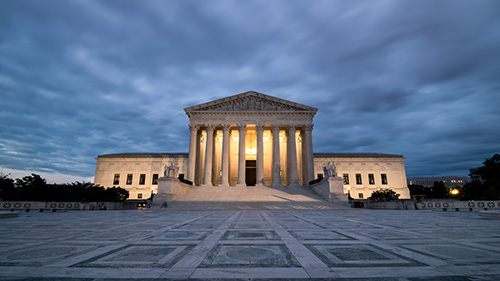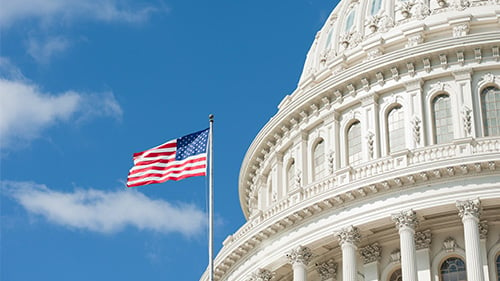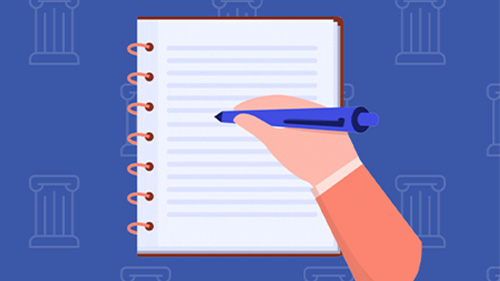APUSH: Start Small, Finish Strong—the SAQ
Early in a school year it can be a real challenge to know how to begin teaching students critical skills they need to score on the AP® U.S. History...
AP & Honors Mathematics
Explore Wiley titles to support both AP and Honors mathematics instruction.
Literacy Skills & Intensive Reading
Connections: Reading – Grades 6–12
Empower student success with a proven intensive reading program that develops strong reading skills in striving readers.
Drama, Speech & Debate
Basic Drama Projects 10th Edition
Build students’ confidence and competence with comprehensive, project-based theatre instruction.
Literature
Connections: Literature
Support learners as they study dynamic, relevant texts and bring the richness of diverse voices to students through literature.
Literature & Thought
Develop critical thinking, reading, and writing across literacy themes, genres, historical eras, and current events.
Language Arts
Vocabu-Lit® – Grades 6–12
Help students build word power using high-quality contemporary and classic literature, nonfiction, essays, and more.
Connections: Writing & Language
Help students develop grammar, usage, mechanics, vocabulary, spelling, and writing and editing skills.
Reading/English Language Arts
Measuring Up to the English Language Arts Standards
Incorporate standards-driven teaching strategies to complement your ELA curriculum.
English Language Learners
Measuring Up for English Language Learners
Incorporate research-based best practices for ELLs with an approach that includes a focus on language acquisition strategies.
Mathematics
Measuring Up to the Mathematics Standards
Incorporate standards-driven teaching strategies to complement your mathematics curriculum.
Foundations
Measuring Up Foundations
Help students master foundational math skills that are critical for students to find academic success.
Science
Measuring Up to the Next Generation Science Standards
Give students comprehensive NGSS coverage while targeting instruction and providing rigorous standards practice.
Assessment
Measuring Up Live
Deliver innovative assessment and practice technology designed to offer data-driven instructional support.
For a better website experience, please confirm you are in:

In a 2004 Gallup survey, history and social studies ranked as the least popular subject for teenagers. Why is this? Many adults recount history class as being forced to memorize names, dates, and events without a connection to one another. Acronyms like SOAPStone (Speaker, Occasion, Audience, Purpose, Subject, and Tone) for teaching the process of analyzing sources and MAIN (Militarism, Alliances, Imperialism, and Nationalism) for teaching content like the causes of World War I remove humanity from instruction. Our students are perceived as vessels carrying reading and writing strategies and content knowledge.
Instead of only learning strategies, students ought to think critically about why or how people and events influenced the past. Over the course of the semester, students will ask the question historians ask themselves: so, what? Why must we know about a certain person, place, or event? What makes something historically significant? How is historical knowledge gained? And can we foster the lessons of the past to create a better future?
History is much more than memorizing important names, dates, and events. Rather, as an argumentative and interpretative discipline, history is the cornerstone to developing an active citizenry in the twenty-first century. If students can recognize and apply historical knowledge and historical thinking to contemporary issues and develop positions that reflect deliberation, cooperation, and diverse perspectives, our students will be in a better position to prepare themselves for their role as citizens in a complex and arguably broken democracy.
One way to help build these skills is through reading and analyzing historical arguments in journals. This process will help students see history not as a task to memorize names and dates, but as an interpretive discipline to assess arguments and make sense of ever-evolving historical knowledge.
For example, when studying the New Deal, students read “Consuming Relief: Food Stamps and the New Welfare of the New Deal” by Dr. Rachel Louise Moran in the Journal of American History. When reading this research, students can better situate New Deal policy in the context of balancing the needs of interest groups, the vast array of political goals, along with the needs of food recipients. Students ultimately better understand how policy was made during the New Deal.
To help students accomplish this, I provide support for them as it is very often the first time students will read a historical article from an academic journal. As students read, they determine the author’s argument, assess the types of sources the author used, evaluate the author’s effectiveness in proving their argument, and finally make connections to the world around them. These skills will help our students make history relevant to their experiences.
The work of our discipline is not to have students memorize but to interpret, ask questions, and find relevance. A great place for this work is in academic articles.
In this activity, students will analyze and engage with historical documents using a helpful graphic organizer as a guide.
Pat Sprinkle is a history teacher at the NYC Lab School for Collaborative Studies, teaching AP® U.S. History and AP® U.S. Politics and Government. Pat is a graduate of The Ohio State University and Columbia University. Pat has served as a member of the Teacher Advisory Council for the Bill and Melinda Gates Foundation, National Humanities Center, and the National Constitution Center. In addition, Pat was a 2013 James Madison Fellow along with a 2021 C-SPAN Fellow. Pat lives in Jersey City, NJ with his wife, son (Franklin), and dog (Lyndon)

Early in a school year it can be a real challenge to know how to begin teaching students critical skills they need to score on the AP® U.S. History...

One of the personal stories I frequently share with my students is how I nearly became a lawyer. I majored in political science and philosophy in...

The Long Essay Question (LEQ) on the AP U.S. History exam offers students an opportunity to construct a sophisticated historical argument, supported...

Many teachers consider the Document Based Question (DBQ) of the AP® European History Exam to be one of the more challenging aspects of the course....

AP® instructor and consultant Brian Stevens shares how he implements Cornell Notes in his AP® Government classroom. Be sure to download his template...

As we get closer to the AP® World History Exam, students will begin to stress about the required essays they will write as part of the exam. The...

I must have convinced you of the need to build a classroom community from my first post because…you’re here. Or maybe you already know that you need...

As a public educator, one of the most vital things that I try to get my students to understand is how all the information they learn works together...

You may have heard about the “Irish” Thesis Formula—it is all over the internet. Some teachers like it, others hate it, but whatever you think about...

The art of teaching can be enhanced by storytelling and great storytelling begins with great stories. Psychology has many of these as it is the study...

The AP® Human Geo test is fast approaching. But don't stress! Author David Palmer offers words of encouragement and advice for seeing your students...

Teaching Advanced Placement® classes can be daunting. You’ll ask yourself questions like “what is the rigor?”; “How do I test them?”; “Should I stick...
